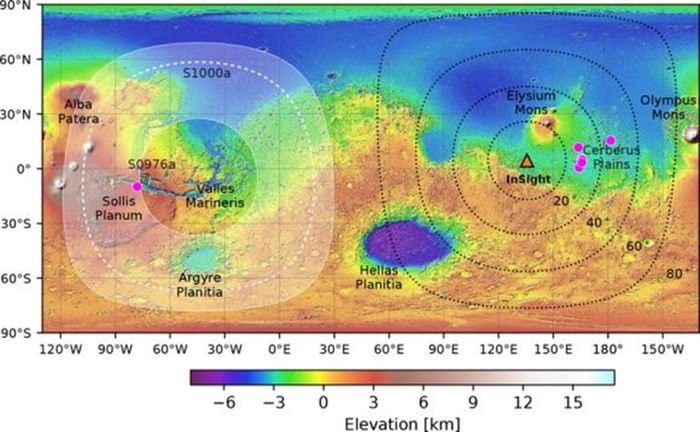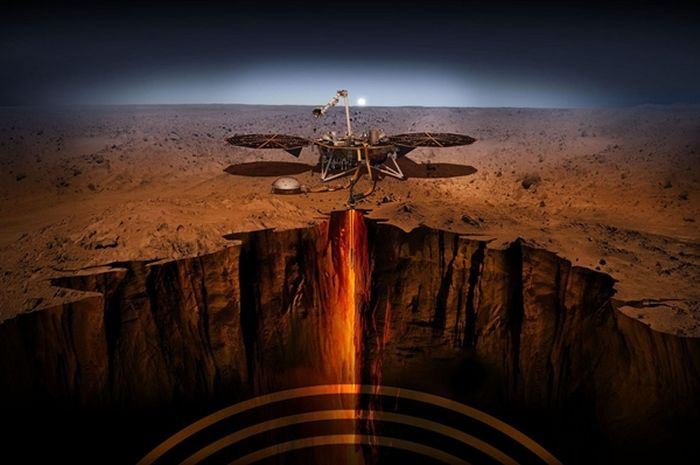NASA
–
A seismometer placed on Mars by NASA’s InSight lander has recorded its two largest seismic events to date.
–
Nationalgeographic.co.id – Seismometers placed on Mars by NASA’s InSight lander have recorded two events seismic its largest to date: a Martian earthquake of magnitude 4.2 and 4.1. This pairing is the first recorded event to occur on the far side of the planet from the lander and is five times more powerful than the largest previously recorded event.
Seismic wave data from the event could help researchers learn more about Mars’ interior layers, particularly its core-mantle boundary, researchers from InSight’s Marsquake Service (MQS) have reported in the journal. The Seismic Record pada 22 April 2022 dengan judul “The Far Side of Mars: Two Distant Marsquakes Detected by InSight”.
Anna Horleston of the University of Bristol and her colleagues were able to identify the reflected PP and SS waves from the magnitude 4.2 event, called S0976a, and find their origin in Valles Marineris, a network of massive canyons that is one of the most prominent geological features on Mars, and It is one of the largest graben systems in the Solar System.
Previous orbital images of cross-sector faults and landslides indicated that the area would be seismically active, but this new event is the first confirmed seismic activity there.
S1000a, magnitude 4.1 recorded 24 days later, is characterized by reflected PP and SS waves and Pdiff waves, small amplitude waves that have crossed the core-mantle boundary. This is the first time Pdiff waves have been seen by the InSight mission. Researchers can’t exactly pinpoint the location of S1000a, but like S0976a, it originates from the far side of Mars. The seismic energy of S1000a also holds the distinction of being the longest recorded on Mars, lasting 94 minutes.

Horleston et al. (2022)
–
A relief map of the Martian surface showing the location of InSight (orange triangle), the region where S1000a occurs, and the origin of S0976a, within Valles Marineris.
–
Both Martian quakes occurred in the core’s shadow zone, a region where P and S waves cannot propagate directly to the InSight seismometer because they are stopped or bent by the core. PP and SS waves do not follow a direct path, but are reflected at least once on the surface before traveling to the seismometer.
“Recording events within the core shadow zone is a real stepping stone to our understanding of Mars. Prior to these two events, most seismicity was within about 40 degrees of InSight,” said Savas Ceylan, co-author of ETH Zürich. “In the shadow of the core, energy traverses a part of Mars that we haven’t seismologically sampled before.”
Also Read: Ever Had It, Why and How Did Mars Lose the Ocean?
Also Read: NASA’s Rogue Robot Finds Organic Molecules on Mars
PROMOTED CONTENT
Featured Videos
–


